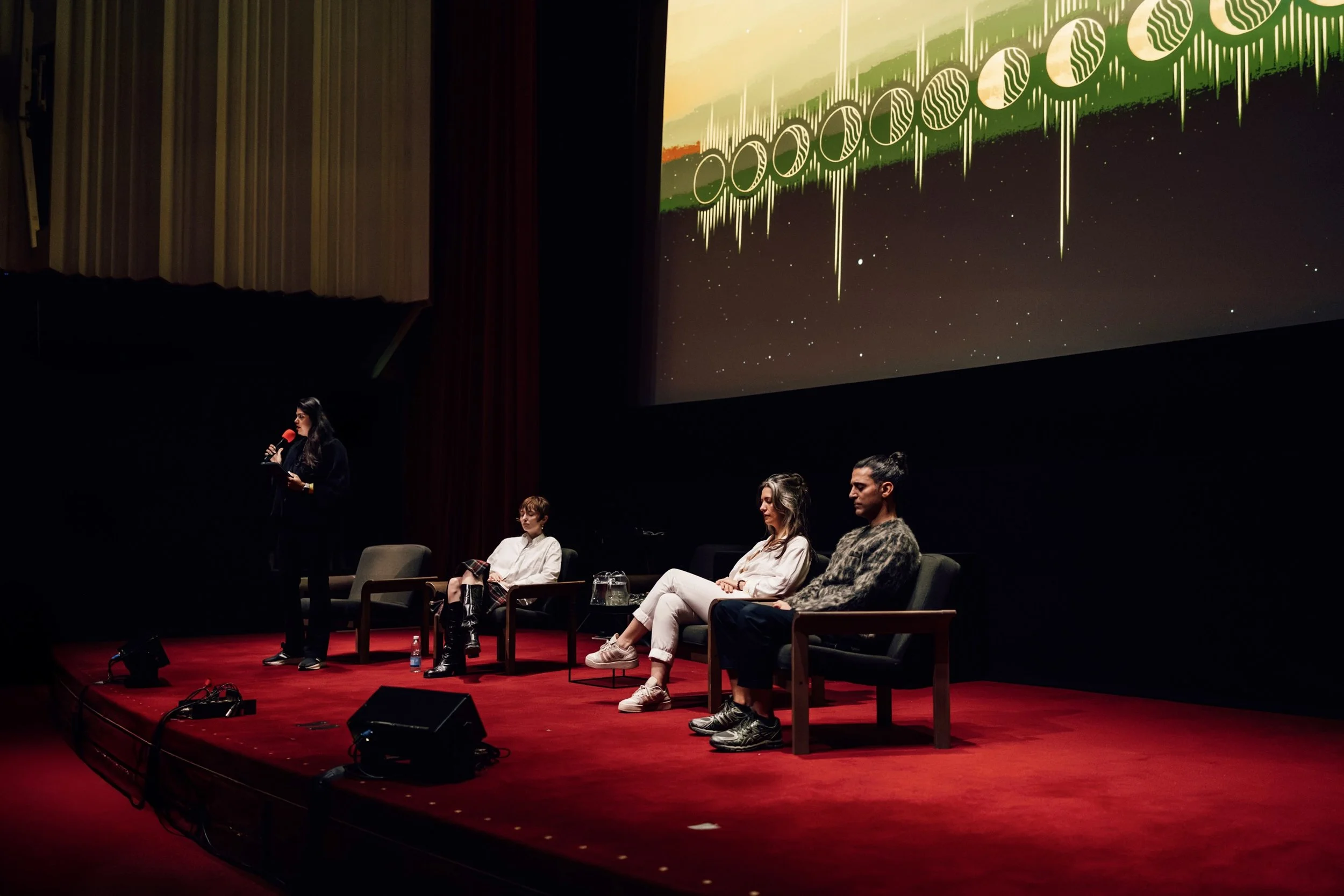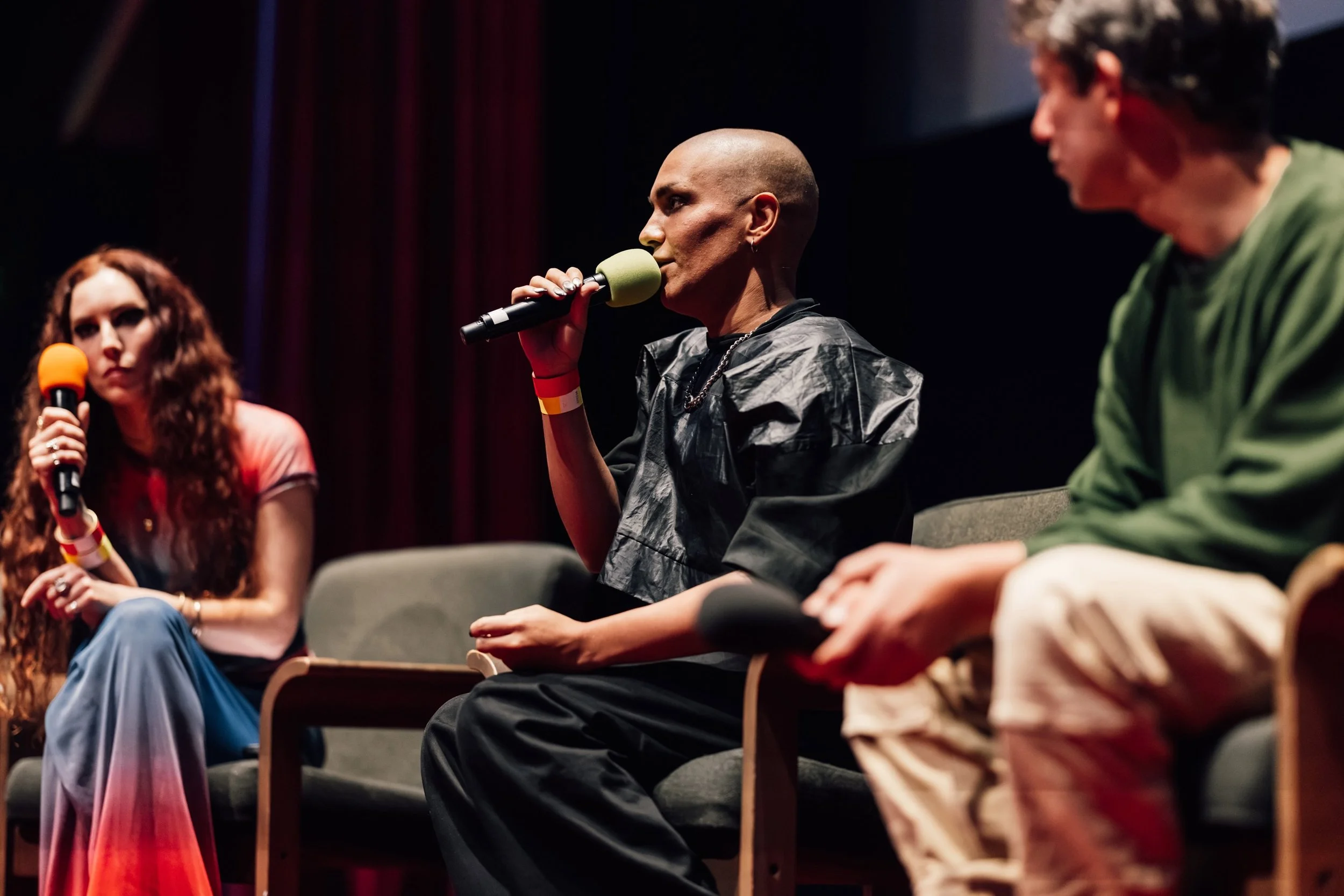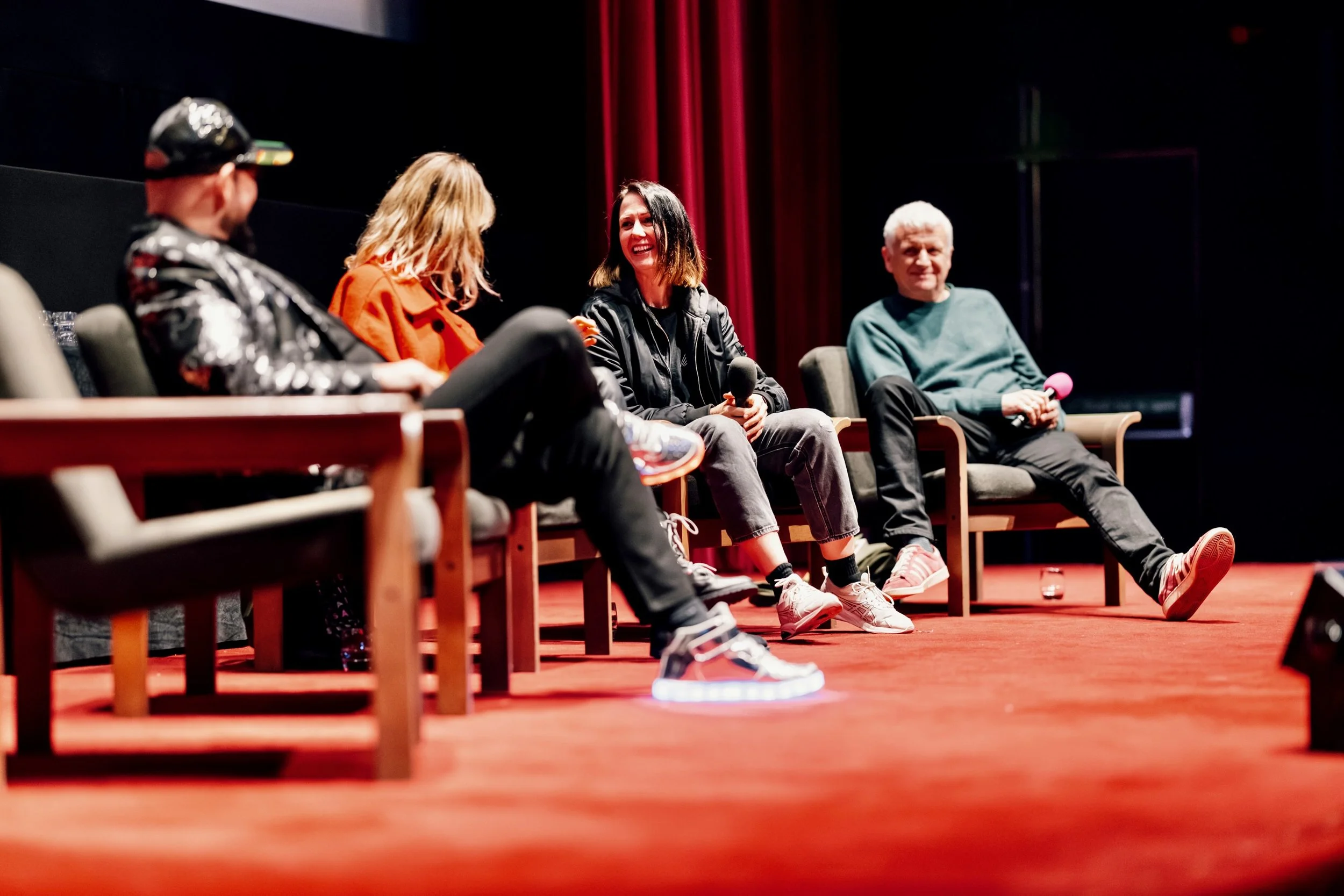London Finally Gets the MUSIC Summit It Didn’t Know It Needed
17th November 2025 | Words by Staff WriterLondon has never been quiet, but on 7th November it finally learned how to listen.
VIEW THE FUTURE IS SOUND 2025 IN PHOTOS
At the Barbican Centre - that brutalist spaceship of concrete, echoes and memory, something new happened. Not a conference. Not a festival. Something stranger, softer, deeper: THE FUTURE IS SOUND 2025 - a full day where artists, thinkers and cultural troublemakers came together to ask one deceptively simple question:
‘What if sound is the technology we’ve been waiting for?’
The summit came from the mind of Jimmy Kyriacou - a ‘new breed cultural innovator’ who thinks London’s next big shift won’t come from nightlife, algorithms or the metaverse, but from how we feel, connect and vibrate together.
WHY THIS MATTERS NOW
London is at a crossroads. Audiences are changing. Communities are searching for meaning. Culture feels fragmented.
Yet across science, therapy, immersive art, nightlife, and new technology, a single idea keeps resurfacing:
Sound changes us.
Collectively. Physically. Emotionally.
This summit asked the question:
If sound is the oldest technology on Earth -what could it become next?
With climate anxiety rising, mental health worsening, and cultural spaces under pressure, the event offered a new direction: music and sound as tools for healing, community, innovation, and planetary awareness.
A Morning That Felt Like Plugging Back Into Yourself
The day began in the dark.
No industry waffle.
Introduced by Roscoe Williamson of MassiveMusic - just a slow, rising sound-ritual from N1NJA (Farah Nanji) that pulled everyone into their bodies and out of their inboxes, that set the tone for the opening panel ‘RAVE AS MEDICINE - WHEN BPM HEALS’
This was a summit you ‘felt’ before you understood.
Cognitive anthropologist Dr Martha Newson unpacked the actual biology of rave euphoria - explaining how synchronised movement, shared rhythm, and elevated heart rates trigger deep-bonding neurochemistry powerful enough to turn a room of strangers into a temporary tribe.
London-based composer, multi-instrumentalist and performer LUXE then grounded the science in lived experience, sharing how the dancefloor has become one of her most profound emotional teachers - a place where bodies communicate beyond language and collective energy becomes a creative force.
Artist ILĀ then hosted the premiere screening of ‘Murmur’. Trained on the lyrical DNA of ILĀ and Imogen Heap - ‘Murmur’ is a haunting meditation on AI, grief, and what it means to be alive. ILĀ and humanoid robot artist ‘Ai-Da’ collaborate across the boundaries of biology and code.
THE POWER OF MUSIC - WHERE NEXT?
Artist and innovator Beatie Wolfe reminded the room that data alone won’t save us - not even climate data. People don’t change because of numbers; they change because of feeling. Her message was simple and devastating:
‘If we want a different future, we need to make the world feel again.’
Tom Middleton - part pioneering artist, part wellness futurist, part sonic therapist - expanded that idea into the body itself. Music, he argued, is nervous-system technology: capable of regulating breath, lowering cortisol, and shifting emotional states with precision.
And Sandra Schembri of Nordoff & Robbins grounded it all in humanity: children in therapy rooms, adults recovering from trauma, people for whom music is the only language that can still reach the places words cannot.
It was a reminder that the power of sound isn’t metaphor — it’s survival.
When contemporary classical–electronic artist Violeta Vicci played, the theatre shifted. The space tightened, softened, lifted - like a cathedral filling itself with breath. You could feel the collective exhale. A quiet emotional reset moved through the room. Someone cried. No one looked away.
The Afternoon Went Wide: Cities, Rituals, Future Worlds
If the morning was intimate, the afternoon cracked everything open.
Japanese experimental vocalist Hatis Noit started it with a performance that felt like someone summoning a parallel universe using nothing but her voice..
Later, Kate Fleur Young hosted a conversation with artists Sam Lee & ILĀ about Performance-As-Ritual - not spectacle, not content, but something older and wilder.
Artists spoke about wanting to move culture past passive consumption toward collective, transformative states. Beatie Wolfe came back with ‘Smoke & Mirrors’, turning methane data into an audio-visual hallucination that made climate grief strangely beautiful.
RESHAPING CULTURE - WHEN MUSIC MOVES PEOPLE, POWER & PLACE.
A panel hosted by AFEM, a lineup featuring EarthPercent’s Cathy Runciman alongside speakers from Resident Advisor, In Place of War, and Bridges for Music pulled apart the politics of culture - who holds the power, who gets heard, and who gets to write a city’s story.
It was one of those conversations where you feel culture shifting by a few degrees.
The screening of ‘TAKKUUK’ - a collaboration between Bicep, EarthSonic and In Place of War - jumped continents in seconds, making clear that sound crosses borders long before diplomacy ever will.
And then came London.
Specifically: London’s sonic soul.
A city that has never stopped shapeshifting through sound - mutating, colliding, reinventing itself with every new wave of creativity. The question now is: what’s next? What does the future of this restless, world-defining musical ecosystem look like?
Journalist Kate Hutchinson led one of the day’s most London-centric conversations, diving straight into the cultural undercurrents that are reshaping the capital. Artist Kate Simko captured the moment perfectly:
‘London’s always been a collision — the magic is in what rises from the crash.’
That set the tone.
Quentin Chambers, MD of OpenLab, expanded the lens further - reminding the room that today’s creators stand on the shoulders of a lineage that includes acid house, rave culture and every underground movement that forced the city to evolve. London’s sound has always been rebellion, reinvention, and renewal.
And then there was Rufy Ghazi: a deeply thoughtful navigator of the intersection where music meets tech, research and rights. Her presence reminded the audience that the future of London’s sonic identity isn’t just about beats and clubs - it’s also about infrastructure, data-driven creativity, and the invisible systems enabling the next wave.
London’s sound has always been a collision of forces. What emerges from its current crash may define the next decade.
THE NEXT WAVE OF LIVE
By the time Halina Rice, Tom Middleton, Kate Simko and DJ Mag’s Editor-in-Chief Carl Loben took the stage to explore spatial audio and the next era of live experience, the atmosphere had shifted completely.
The room no longer felt like a conference, it felt like a lab, a test site, a place where the boundaries of performance were being redrawn in real time. Screens lit up. Heads leaned forward. You could feel the collective imagination stretching as they unpacked how immersive sound, multi-sensory design, and new creator tools are dissolving the old rules of live music.
THE FUTURE IS SOUND 2025 wasn’t about hype or industry pipelines.
It was about tuning London - even briefly, to a different frequency.
One where culture isn’t just seen or consumed.
It’s felt.
If this was the first chapter, London’s about to get a lot louder, and a lot more awake.
Want to be part of what happens next?
SUBSCRIBE HERE to stay in the loop for THE FUTURE IS SOUND 2026 autumn series.










